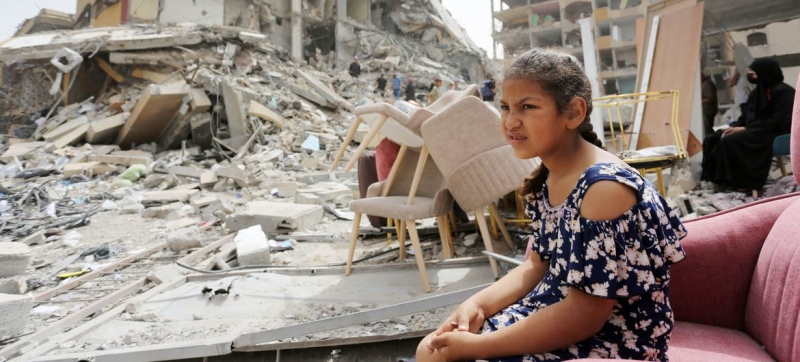
Among the main problems facing the population of Gaza, OCHA identified shortages of milk and formula for infants, as well as nutritional supplements for children and pregnant and lactating women. The UN again warns of dire conditions in Gaza: scorching heat, severe food shortages and heavy fighting. Peace and Security
Gazans’ most vulnerable residents are struggling to survive amid stifling heat, heavy fighting, spreading disease, anarchy and shortages of basic necessities. UN humanitarian agencies warned about this on Thursday.
The UN World Food Program (WFP) reiterated its deep concern that people forced from their homes by fighting in southern Gaza are huddled in a limited area “in the scorching heat of summer.”
WFP Deputy Executive Director Karl Skau previously noted that “active conflict and anarchy” have made it “virtually impossible” for WFP and its partners to provide assistance to populations in dire need of support .
Malnutrition and exhaustion
Among the main problems facing the population of Gaza, the UN Office for the Coordination of Humanitarian Affairs (OCHA) highlighted the shortage of milk and infant formula, as well as nutritional supplements for children, pregnant and lactating women.
Read also:
UN calls for increased funding for women’s organizations in Gaza and the West Bank
“Despite visible signs of malnutrition among children, it was not possible to assess the extent of malnutrition and the necessary treatment in the current conditions,” the new OCHA report notes.
Pre- and postnatal care is also unavailable, and some displacement sites have health posts that operate “only a few hours a day” without adequate supplies of medicines, the UN agency added. Cases of emergency births at night in tents without medical support have been reported.
Evacuation from Rafah
Meanwhile, people continue to flee their shelters in Rafah amid active fighting and bombing. The UN agency for Palestine refugees (UNRWA) estimates that only about 65,000 people remain there. However, six weeks ago, before evacuation orders and military operations, there were 1.4 million Palestinians in the area.
Referring to the latest assessments of the situation at the four displacement sites in Deir Al-Balah, Khan Younis and Al-Mawasi, home to more than 130,000 people, OCHA reported that displaced people are living in overcrowded makeshift shelters and tents that are in dire need of repairs and offer no protection from extreme heat.
Also according to the UN agency, five truckloads of fuel entered Gaza for the first time since early June, but supplies remain scarce “as fuel has not entered the strip for the past two weeks.”
Humanitarian supplies
A million displaced people in southern Gaza remain without clean water and sanitation, which is a disaster for public health and social protection.
He noted that humanitarian aid supplies had improved in northern Gaza, although people still needed more diverse and nutritious food. Meanwhile, delivering essential supplies has become increasingly difficult as staff “spend five to eight hours each day waiting at checkpoints” and UN premises have come under fire.
“The breakdown of law and order means that we also face looting and violence in a large security vacuum,” Skau continued.
Land Destruction
The UN estimates that more than half of the enclave’s arable land has been damaged. This has seriously disrupted the food supply chain, warned experts from the Food and Agriculture Organization (FAO) and the United Nations Satellite Center (UNOSAT).
Even though more than 40 percent of the sector’s total area Gaza is occupied by fields, vegetable plantations and orchards (about 150 square kilometers), UN agencies noted a “significant decline” in crop potential as a result of “destruction, movement of heavy equipment, bombing, shelling and other conflict-related operations.”
As of May this year, about 57 percent of Gaza’s arable land was damaged, up from more than 40 percent in mid-February, according to FAO and UNOSAT. Also, as of May 20, hundreds of agricultural structures had been damaged, including 537 cow barns, 484 broiler farms, 397 sheep farms, and 256 agricultural warehouses, as well as nearly half of Gaza’s agricultural wells (1,049 of 2,261).
The latest figures from Gaza health authorities indicate that at least 37,396 Palestinians have been killed and 85,523 wounded since the conflict began.
